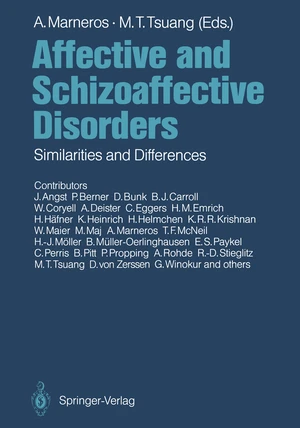Several contributions in our first book about schizo affective disorders (Marneros and Tsuang, Schizoaffective Psychoses, Springer-Verlag, 1986) supported the assumption that schizoaffective disorders differ in relevant ways from schizophrenic disorders. The classification of schizo affective disorders as a subgroup of schizophrenia has also been criticized, and empirical research in clinical, genetic, therapeutic, and prognostic areas supports the idea that there are some strong similari ties between schizo affective and affective disorders. Of course, there are not only similarities between these two groups, but also differences just as there are between schizo affective and schizophrenic disorders. It is precisely the existence of similarities and differences between schizo affective disorders and the other two so-called typical mental disorders, i.e., schizophrenia and affective disorders, which makes them a challenge in psychiatric research, a challenge to the traditional dichotomy in the classification of disorders which originated with Kraepelin. This challenge is certainly proving fruitful in psychiatric research. These "cases in between" may well demonstrate that sep arating, dividing, and limiting is not always meaningful. Sometimes it can be more meaningful to unify; to unify in the sense of building bridges between typical groups. It is here that the assumption of a "psychotic continuum" can become relevant, and the investigation of schizoaffective disorders is of prime importance in research on a possible continuum of psychosis.
Price history
Jul 1, 2022
€123.19

